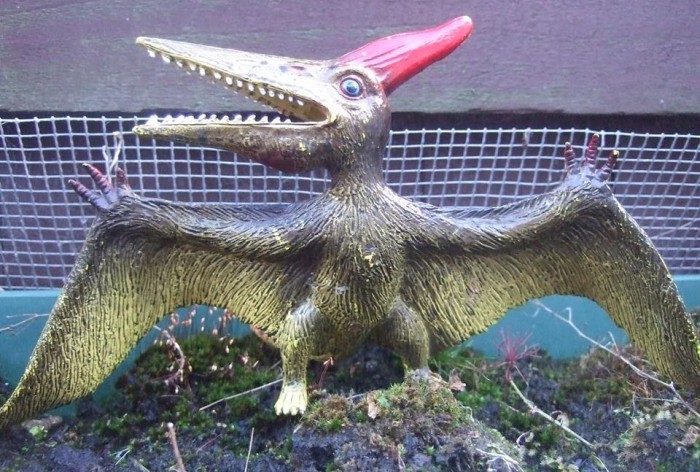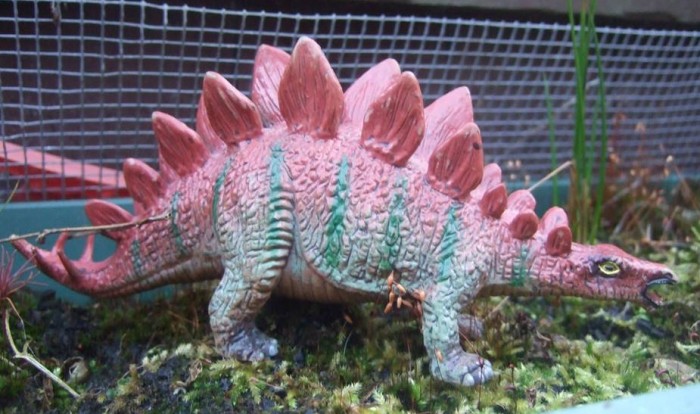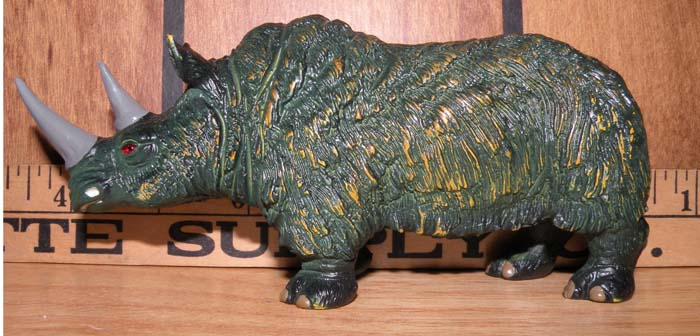Review and photographs by Indohyus, edited by Suspsy
In recent years, the pantheon of ornithomimosaur figures has expanded more than ever before. Though still an underrepresented family of dinosaurs, these omnivorous/herbivorous theropods are very interesting oddities that only a few companies have tried to represent.
Brand: AAA
Review: Woolly Mammoth (AAA)

3.4 (9 votes)
Review and photographs by Indohyus, edited by Suspsy
Mammuthus primigenius, the fabled woolly mammoth, is an iconic Ice Age animal well known around the world, a symbol of the amazing adaptability of mammals. This mighty beast is the first prehistoric mammal to be immortalized in plastic by toy companies.
Mammuthus primigenius, the fabled woolly mammoth, is an iconic Ice Age animal well known around the world, a symbol of the amazing adaptability of mammals. This mighty beast is the first prehistoric mammal to be immortalized in plastic by toy companies.
Review: Smilodon (AAA)
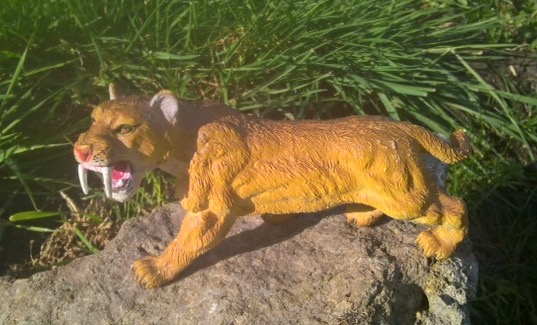
3.7 (7 votes)
Review and photographs by Indohyus, edited by Suspsy
Smilodon. Whether it’s populator, fatalis, or gracilis, one thing is certain: this was a powerful felid, the epitome of ancient mammal predators. Originally from North America, then successfully emigrating to South America during the Great Faunal Interchange, there are few who haven’t heard of this mighty mammal, especially for its 28 cm sabre teeth.
Smilodon. Whether it’s populator, fatalis, or gracilis, one thing is certain: this was a powerful felid, the epitome of ancient mammal predators. Originally from North America, then successfully emigrating to South America during the Great Faunal Interchange, there are few who haven’t heard of this mighty mammal, especially for its 28 cm sabre teeth.
Review: Ceratosaurus (AAA)

3.3 (13 votes)
Review and photos by Takama, edited by Suspsy
A long time ago in the year 2005, I was hospitalized for 103 days due to a serious heart condition that nearly claimed my life at the young age of twelve. As a result of this issue, I was eligible for a wish to be granted by the Make A Wish Foundation of America, and it is thanks to them that the subject of today’s review is a part of my collection.
A long time ago in the year 2005, I was hospitalized for 103 days due to a serious heart condition that nearly claimed my life at the young age of twelve. As a result of this issue, I was eligible for a wish to be granted by the Make A Wish Foundation of America, and it is thanks to them that the subject of today’s review is a part of my collection.
Review: Pteranodon (AAA)
Review: Stegosaurus (AAA)
Review: Hyaenodon (AAA)
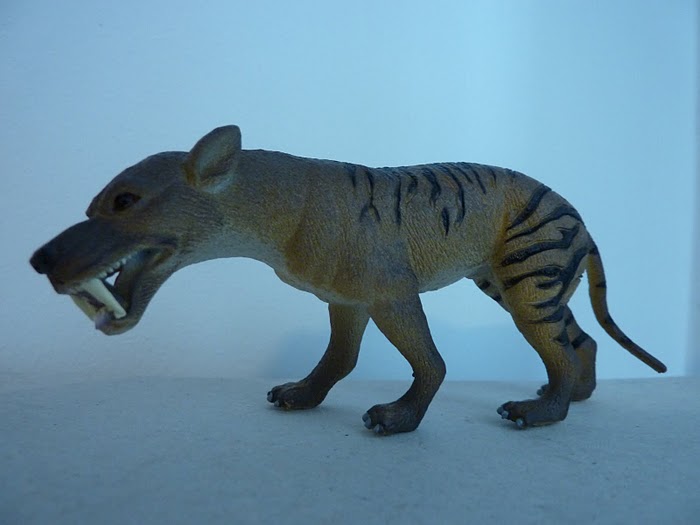
3.5 (8 votes)
Review and photos by Mihnea (Wildheart)
Existing for approximately 26 million years, Hyaenodonts were some of the largest predators of the Late Eocene and Early Miocene epochs. Their name comes from the sharp hyena-like teeth used to tear apart possible prey. The skulls of these animals were huge and well equipped for hunting, but their brains were quite small, something typical in primitive carnivorous mammals.
Existing for approximately 26 million years, Hyaenodonts were some of the largest predators of the Late Eocene and Early Miocene epochs. Their name comes from the sharp hyena-like teeth used to tear apart possible prey. The skulls of these animals were huge and well equipped for hunting, but their brains were quite small, something typical in primitive carnivorous mammals.
Review: Woolly rhinoceros (AAA)
Review: Entelodont (AAA)
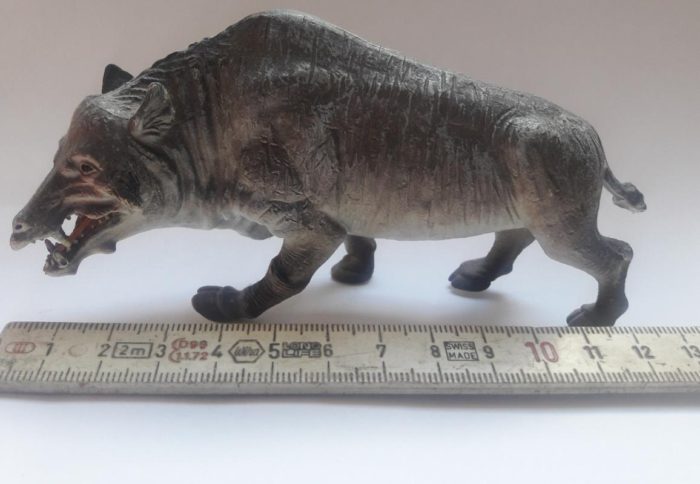
4 (9 votes)
Admittedly, there were lovelier animals to have walked the earth in prehistoric times than entelodonts, omnivorous beasts that were two metres tall and four metres long. Entelodonts were especially abundant in what are now Mongolia, China and Northern America and strolled through the landscape searching for any kind of food in the Eocene epoch – mainly probably carrion.
Review: Deinonychus (AAA)
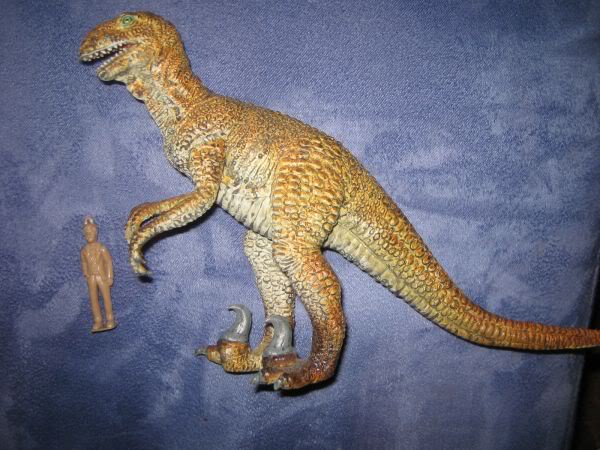
3.1 (17 votes)
Once there was a time when Theropods simply were divided into ‘Carnosaurs’ (the big ones such as Allosaurus and Tyrannosaurus) and ‘Coelurosaurs’ (the smaller ones such as Coelophysis or Compsognathus). Then along came Deinonychus, an irritating new predator who did not really fit into this concept.





